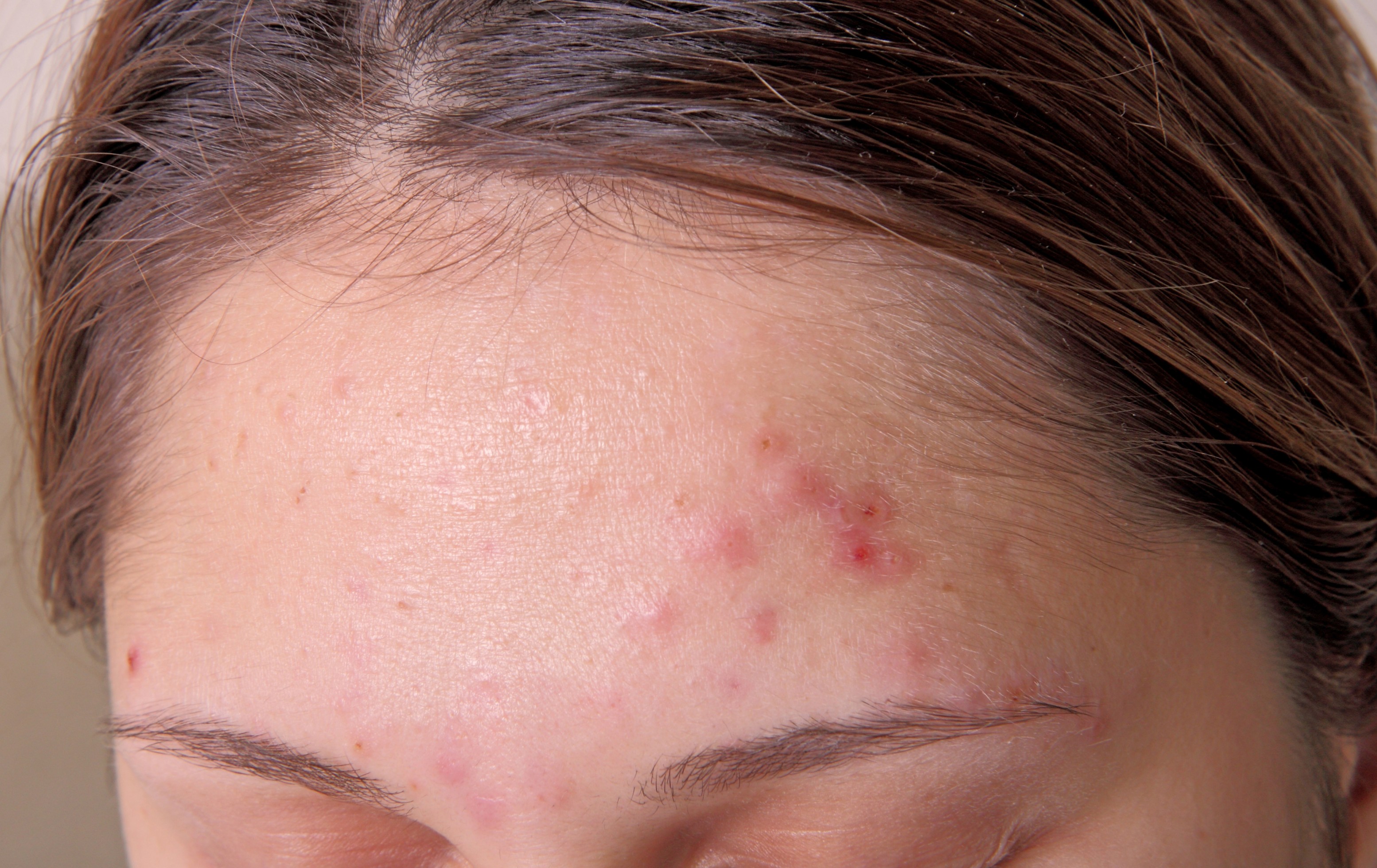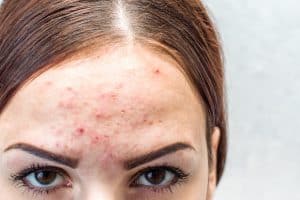Causes of eczema / khaaj –
We have found many ways to express our anger, and one of the most used lines is when we say that something “makes our blood boil”. Fortunately, this was almost always just a figure of speech and nothing of that sort actually happened.
The Greeks in the ancient times, thoughtfully, when they came across skin that looked like it had been boiled, decided to name it exactly- Eczema.
This article will focus on the causes of eczema or khaaj and its different types.
Eczema/khaaj is the Greek equivalent of the phrase “to boil over”, and was used when the skin began to look red, inflamed and itchy(1), and was followed by pus-filled boils and lesions. From that time onwards till today, modern medicine has come a long way in clearly diagnosing the skin condition and getting a better understanding of it.
Firstly, it is important to recognize that eczema is not a single disease. The causes of eczema/khaaj include a specific group of conditions that may cause inflammation, redness, and itching of the skin(2). These are the beginning signs of eczema/khaaj and are vital in diagnosing the problem.
Out of the different skin conditions that may fall under the category of eczema, the most prevalent and common one is called atopic dermatitis. While the term atopic refers to a connection with the immune system, dermatitis is the common term used for any skin condition that may cause inflammation. Apart from atopic dermatitis, other major types include:
Allergic contact dermatitis: when repeatedly exposed to the same substance, which in this case could be an allergen(3), the body activated an “immune recognition system” and this causes inflammation at that spot. We might be able to relate this to poison ivy allergy for better clarity of the condition.
Irritant dermatitis: Excessive washing and exposing skin constantly to strong chemical-based products may cause this skin condition(4). Friction is the enemy in this case, where the rate of damage to the skin is higher than the rate of healing. All those people who believe more is better when it comes to cleanliness and hygiene may be in for a rude awakening.
Fungal infections: This is a common condition that we often come across in more humid climates, and is almost indistinguishable from the other forms of eczema or khaaj (5). But what sets it apart is that, by scraping the skin and closely examining it, the fungal growth can be revealed.
Stasis dermatitis: is a very region specific type of eczema, which occurs on the lower part of our legs. People who have a lesser circulation of blood in the veins towards the leg are more prone to contracting this condition. Along with inflammation, dry and flaky skin, hyper pigmentation may also occur in more severe cases(6).
Seborrheic dermatitis: this is known to be a very common form of eczema that typically targets the scalp, face and chest regions. It shows signs like dandruff, inflammation, and peeling of skin(7).
Unfortunately, it is a disease that comes and goes randomly and is incurable. However, with proper medication and care, it is highly manageable.
Scabies: Is a mite-caused form of eczema/khaaj that produces similar rashes and inflammation.
There are many other forms of eczema which have varying levels of severity, like dyshidrotic eczema, nummular eczema, and lichen simplex eczema, but the storyline of the symptoms and conditions are similar to those mentioned above.
Also read: Nummular Eczema: What is it? Symptoms, Causes and Treatment
Is Eczema/khaaj dangerous?
Being termed a common skin condition, eczema has long been studied and researched upon. This in part has helped us understand that although common and known to be severe at times, it is not always a dangerous skin condition to have. It is estimated that around 31 % of the population of the USA are inflicted with this skin condition(2).
Yet another common misconception about eczema is that it can be contagious. This is not true, and the main causes of eczema are often a combination of genetics and environmental influences on the skin.
If you were to consult a dermatologist, one of the first forms of diagnosis they do is get a thorough check on your parents and history of the condition in the family. For instance, chances are higher for someone to get atopic dermatitis if there is a history of either of your parents having it. Hence it can be hereditary(8).
Apart from genetic disposition, there are other possible causes for forms of eczema. At times, food items have been known to trigger the symptoms of eczema, and these include dairy products and even nuts. However, the scale of the symptoms varies from person to person, depending on their age, as well as the strength of their immune system.
Simultaneously, environmental conditions like pollen in the air or pollution, in particular, can worsen existing symptoms of eczema like dry skin, and inflammation(9).
One of the major causes of eczema and atopic dermatitis is exposure to strong harsh chemicals and allergens. This happens when you excessively wash your hands with strong detergents and soaps.
In their attempts to maintain ultimate levels of hygiene, people tend to forget how sensitive the skin actually is. And this leads to eczema, starting with simple rashes and dry skin, and ultimately leading to skin thickening, cracking and even pus formation in most extreme of cases.
At the same time, we must not be too lax with cleanliness, because there are certain kinds of bacteria that fester in the symptoms of eczema, and make it worse.
Friction is the main nemesis when it comes to eczema, so doing anything that applies excessive friction on the skin makes you more vulnerable to the disease.
Is Eczema Fungal?
As mentioned above, there exists a type of eczema of the fungal kind, known as fungal eczema. This is a common condition that we may come across in more humid climates and is almost indistinguishable from the other forms of eczema(5). But fungal growth on the afflicted area is clearly a distinguishing factor for this type of eczema.
Is Eczema curable?
Unfortunately, eczema is more of an incurable disease, which when once shown up, tends to make an appearance regularly if not treated promptly. Still, there are easy and manageable ways to control the skin condition and keep it at bay.
Often, eczema is termed as a condition which doesn’t require special care, especially when it is at its more timid stages. The best recommendations made for handling forms of eczema are to change laundry detergents and soaps to more milder forms of it, as well as watching the clothes we wear.
Tighter fitting clothes tend to increase the chances of friction and rashes on the body, which invites eczema to set in. Even a simple switching of fragrances or opting to avoid them can help with reducing eczema. We can keep away dry skin by reducing those hot water showers that we tend to love.
When such home remedies tend to fail, there are still many over-the-counter medication options which are available, either topical or antibiotic tablets which can be effective on the inflammation. Their main constituent is hydrocortisone, which tends to work wonders as a mild steroid.
However, to ensure that this steroid doesn’t clash with your system and any other medication, it is advisable to consult a physician. Usually, general physicians are the recommended specialists to visit for eczema and dermatologists in more extreme cases.
Is Eczema hereditary?
Eczema or khaaj does have higher chances of being hereditary than being caused by other factors. However, the triggers may often be external factors like the environment or our lifestyle choices.
What is Eczema/khaaj called in Hindi and Tamil?
Rather than having a specific term for eczema in languages like Hindi and Tamil, they tend to emphasize the symptoms. For instance, itching is referred to as “khujali (खुजली)”, while the rashes and plaque skin are referred to as “Daad (खाज)” and “Khaaj (खाज)”. It is a similar case in Tamil, where the regularly used terms in the Siddha version is “karappan”.
In general, eczema is a fairly common skin condition that need not be feared, since it can be dealt with easily. People tend to feel a sinking of self-confidence and rise in body image issues when afflicted with such a skin condition. However, by making even the smallest of alterations to their lifestyle as mentioned, and by visiting a physician, eczema can be easily controlled.
Don’t know how to treat eczema? Get a consultation with our dermatologists! Download the CureSkin App now by clicking here to get the best treatment. It’s easy, fast and affordable!


